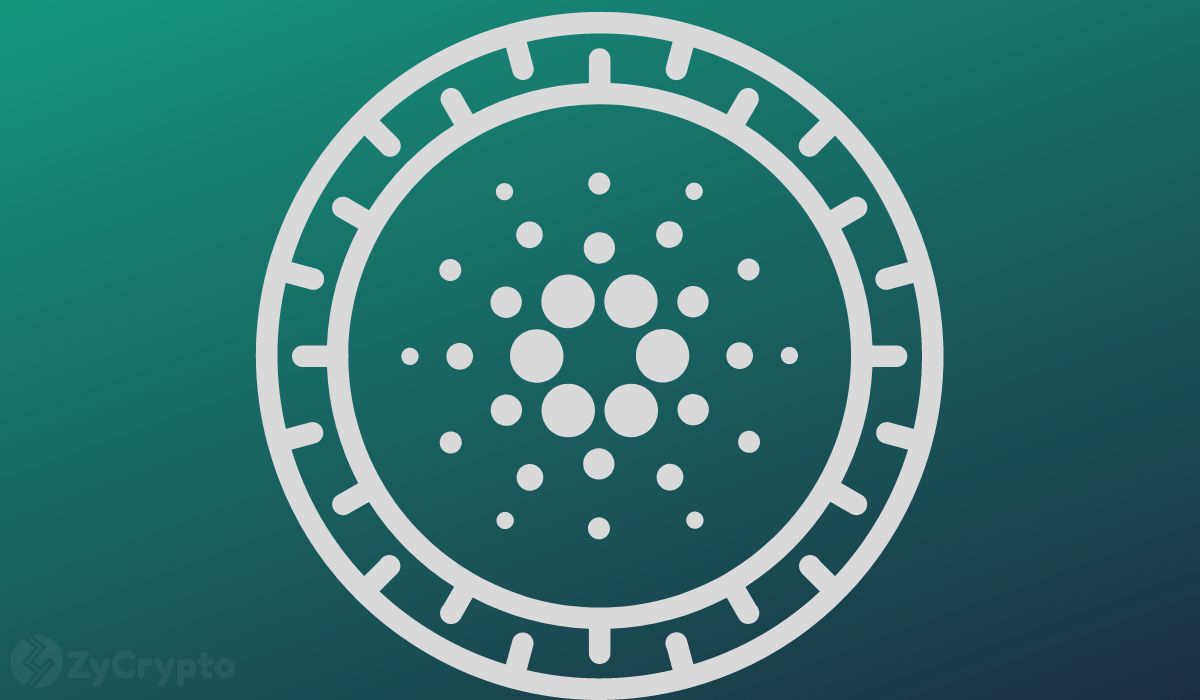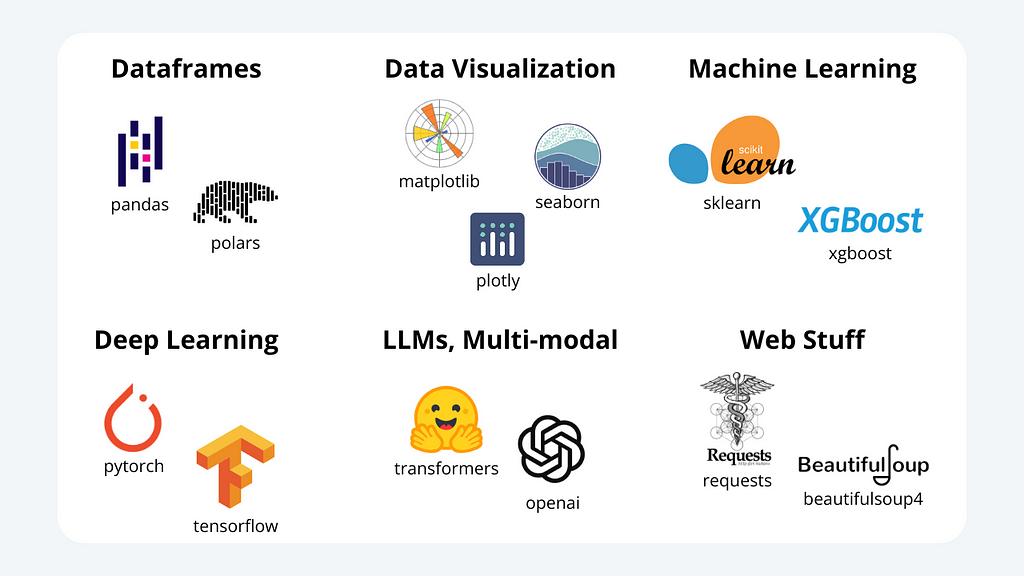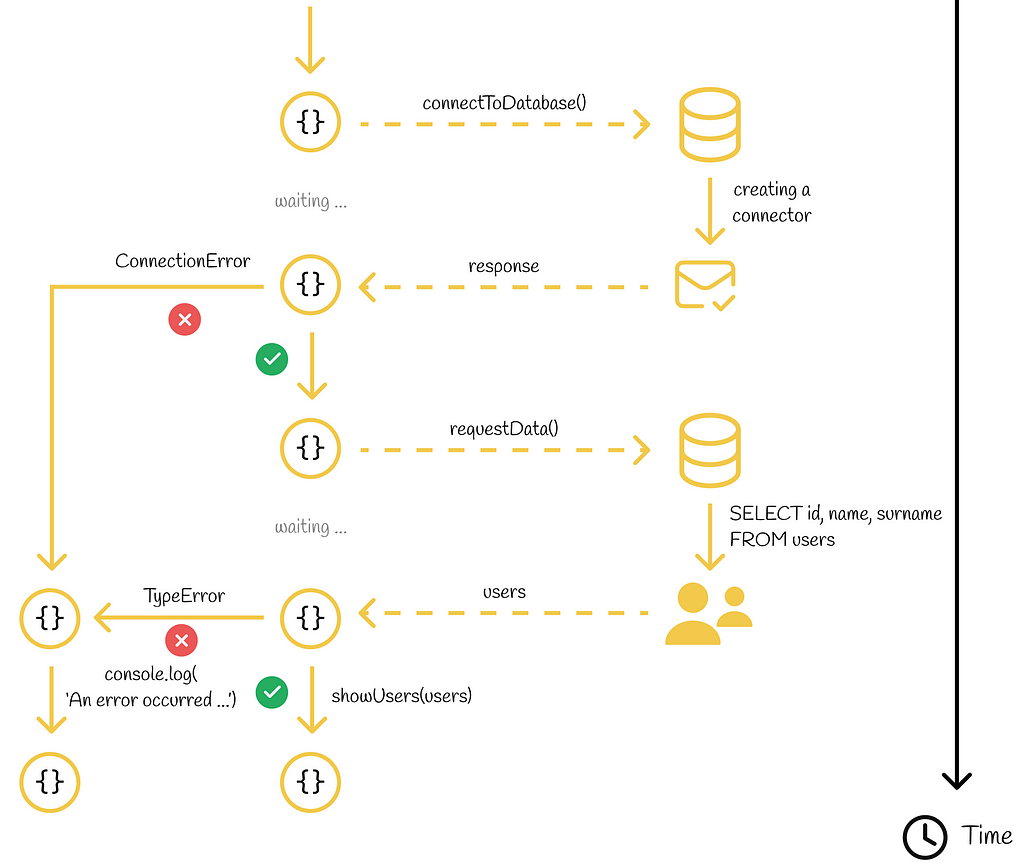Go Here to Read this Fast! Google Pixel 9 vs. Pixel 8: Do you really need to upgrade?
Originally appeared here:
Google Pixel 9 vs. Pixel 8: Do you really need to upgrade?
Go Here to Read this Fast! Google Pixel 9 vs. Pixel 8: Do you really need to upgrade?
Originally appeared here:
Google Pixel 9 vs. Pixel 8: Do you really need to upgrade?
BTC has declined by 10.85% on monthly charts.
An analysts cites 2019 consolidation cycle as a sign for upcoming uptrend.
Over the past month, Bitcoin [BTC] has defied all market predictions.
The post Bitcoin: Analyst predicts a BTC rally based on THIS historical cycle appeared first on AMBCrypto.
Go here to Read this Fast! Bitcoin: Analyst predicts a BTC rally based on THIS historical cycle
Originally appeared here:
Bitcoin: Analyst predicts a BTC rally based on THIS historical cycle
Starknet, Helium, and SUI had the biggest gains of the past week.
DOGS, Cosmos, and Beam were the biggest losers of the past week.
DOGS came out blazing, well, almost, as it ended up being o
The post Crypto market’s weekly winners and losers – STRK, HNT, DOGS, and ATOM appeared first on AMBCrypto.



The launch of VulcanX on the DTX Exchange has ignited a surge, leading to a $300K rally in just one day. While excitement builds around this milestone, major cryptocurrencies like Dogecoin (DOGE) and Solana (SOL) have experienced slight declines due to various factors. This article explores the impact of VulcanX’s launch, how it captured market […]



Charles Hoskinson has outlined the next steps for Cardano (ADA) following the successful implementation of the Chang hard fork last weekend.
Go here to Read this Fast! Cardano Founder Outlines Future Plans For ADA Network Post-Chang Hardfork
Originally appeared here:
Cardano Founder Outlines Future Plans For ADA Network Post-Chang Hardfork



Solana’s immediate prospects look positive as a technical analysis indicator, known to mark inflection points in the market, is flashing a bullish signal.
Originally appeared here:
Technical Analysis Suggests Solana Is Quietly Setting Up For Parabolic Breakout



Gold proponent Peter Schiff has once again taken a dig at spot Bitcoin exchange-traded funds (ETFs) and the performance of these products.
Originally appeared here:
Spot BTC ETF Investors Have ‘Bet On The Wrong Horse’, Asserts Bitcoin Critic Peter Schiff



Rexas Finance (RXS) is set to revolutionize the world of Real World Asset (RWA) tokenization with its upcoming presale, scheduled to begin on September 8, 2024. This highly anticipated event marks a significant milestone for Rexas Finance as it continues to push the boundaries of blockchain technology and redefine asset management. The initiative promises to […]
Originally appeared here:
RWA Tokenization Initiative Rexas Finance (RXS) Reveals September 8, 2024, as the Date for Presale Kickoff


Python has become the de facto programming language for AI and data science. Although no-code solutions exist, learning how to code is still essential to build fully custom AI projects or products. In this article, I share a beginner QuickStart guide to AI development with Python. I’ll cover the basics and then share a concrete example with code.

Python is a programming language, i.e., a way to give computers precise instructions to do things we can’t or don’t want to do [1].
This is handy when automating a unique task without an off-the-shelf solution. For example, if I wanted to automate writing and sending personalized meeting follow-ups, I could write a Python script to do this.
With tools like ChatGPT, it’s easy to imagine a future where one could describe any bespoke task in plain English, and the computer would just do it. However, such a consumer product does not exist right now. Until such products become available, there is tremendous value in knowing (at least a little) Python.
While current AI products (e.g. ChatGPT, Claude, Gemini) haven’t made programming obsolete (yet), they have made it easier than ever to learn how to code. We all now have a competent and patient coding assistant who is always available to help us learn.
Combined with the “traditional” approach of Googling all your problems, programmers can now move faster. For instance, I generously use ChatGPT to write example code and explain error messages. This accelerates my progress and gives me more confidence when navigating new technology stacks.
I’m writing this with a particular type of reader in mind: those trying to get into AI and have done a little coding (e.g., JS, HTML/CSS, PHP, Java, SQL, Bash/Powershell, VBA) but are new to Python.
I’ll start with Python fundamentals, then share example code for a simple AI project. This is not meant to be a comprehensive introduction to Python. Rather, it’s meant to give you just enough to code your first AI project with Python fast.
About me — I’m a data scientist and self-taught Python programmer (5 years). While there’s still much for me to learn about software development, here I cover what I think are the bare essentials of Python for AI/data science projects based on my personal experience.
Many computers come with Python pre-installed. To see if your machine has it, go to your Terminal (Mac/Linux) or Command Prompt (Windows), and simply enter “python”.

If you don’t see a screen like this, you can download Python manually (Windows/ Mac). Alternatively, one can install Anaconda, a popular Python package system for AI and data science. If you run into installation issues, ask your favorite AI assistant for help!
With Python running, we can now start writing some code. I recommend running the examples on your computer as we go along. You can also download all the example code from the GitHub repo.
A data type (or just “type”) is a way to classify data so that it can be processed appropriately and efficiently in a computer.
Types are defined by a possible set of values and operations. For example, strings are arbitrary character sequences (i.e. text) that can be manipulated in specific ways. Try the following strings in your command line Python instance.
"this is a string"
>> 'this is a string'
'so is this:-1*!@&04"(*&^}":>?'
>> 'so is this:-1*!@&04"(*&^}":>?'
"""and
this is
too!!11!"""
>> 'andn this isn too!!11!'
"we can even " + "add strings together"
>> 'we can even add strings together'
Although strings can be added together (i.e. concatenated), they can’t be added to numerical data types like int (i.e. integers) or float (i.e. numbers with decimals). If we try that in Python, we will get an error message because operations are only defined for compatible types.
# we can't add strings to other data types (BTW this is how you write comments in Python)
"I am " + 29
>> TypeError: can only concatenate str (not "int") to str
# so we have to write 29 as a string
"I am " + "29"
>> 'I am 29'
Beyond the basic types of strings, ints, and floats, Python has types for structuring larger collections of data.
One such type is a list, an ordered collection of values. We can have lists of strings, numbers, strings + numbers, or even lists of lists.
# a list of strings
["a", "b", "c"]
# a list of ints
[1, 2, 3]
# list with a string, int, and float
["a", 2, 3.14]
# a list of lists
[["a", "b"], [1, 2], [1.0, 2.0]]
Another core data type is a dictionary, which consists of key-value pair sequences where keys are strings and values can be any data type. This is a great way to represent data with multiple attributes.
# a dictionary
{"Name":"Shaw"}
# a dictionary with multiple key-value pairs
{"Name":"Shaw", "Age":29, "Interests":["AI", "Music", "Bread"]}
# a list of dictionaries
[{"Name":"Shaw", "Age":29, "Interests":["AI", "Music", "Bread"]},
{"Name":"Ify", "Age":27, "Interests":["Marketing", "YouTube", "Shopping"]}]
# a nested dictionary
{"User":{"Name":"Shaw", "Age":29, "Interests":["AI", "Music", "Bread"]},
"Last_login":"2024-09-06",
"Membership_Tier":"Free"}
So far, we’ve seen some basic Python data types and operations. However, we are still missing an essential feature: variables.
Variables provide an abstract representation of an underlying data type instance. For example, I might create a variable called user_name, which represents a string containing my name, “Shaw.” This enables us to write flexible programs not limited to specific values.
# creating a variable and printing it
user_name = "Shaw"
print(user_name)
#>> Shaw
We can do the same thing with other data types e.g. ints and lists.
# defining more variables and printing them as a formatted string.
user_age = 29
user_interests = ["AI", "Music", "Bread"]
print(f"{user_name} is {user_age} years old. His interests include {user_interests}.")
#>> Shaw is 29 years old. His interests include ['AI', 'Music', 'Bread'].
Now that our example code snippets are getting longer, let’s see how to create our first script. This is how we write and execute more sophisticated programs from the command line.
To do that, create a new folder on your computer. I’ll call mine python-quickstart. If you have a favorite IDE (e.g., the Integrated Development Environment), use that to open this new folder and create a new Python file, e.g., my-script.py. There, we can write the ceremonial “Hello, world” program.
# ceremonial first program
print("Hello, world!")
If you don’t have an IDE (not recommended), you can use a basic text editor (e.g. Apple’s Text Edit, Window’s Notepad). In those cases, you can open the text editor and save a new text file using the .py extension instead of .txt. Note: If you use TextEditor on Mac, you may need to put the application in plain text mode via Format > Make Plain Text.
We can then run this script using the Terminal (Mac/Linux) or Command Prompt (Windows) by navigating to the folder with our new Python file and running the following command.
python my-script.py
Congrats! You ran your first Python script. Feel free to expand this program by copy-pasting the upcoming code examples and rerunning the script to see their outputs.
Two fundamental functionalities of Python (or any other programming language) are loops and conditions.
Loops allow us to run a particular chunk of code multiple times. The most popular is the for loop, which runs the same code while iterating over a variable.
# a simple for loop iterating over a sequence of numbers
for i in range(5):
print(i) # print ith element
# for loop iterating over a list
user_interests = ["AI", "Music", "Bread"]
for interest in user_interests:
print(interest) # print each item in list
# for loop iterating over items in a dictionary
user_dict = {"Name":"Shaw", "Age":29, "Interests":["AI", "Music", "Bread"]}
for key in user_dict.keys():
print(key, "=", user_dict[key]) # print each key and corresponding value
The other core function is conditions, such as if-else statements, which enable us to program logic. For example, we may want to check if the user is an adult or evaluate their wisdom.
# check if user is 18 or older
if user_dict["Age"] >= 18:
print("User is an adult")
# check if user is 1000 or older, if not print they have much to learn
if user_dict["Age"] >= 1000:
print("User is wise")
else:
print("User has much to learn")
It’s common to use conditionals within for loops to apply different operations based on specific conditions, such as counting the number of users interested in bread.
# count the number of users interested in bread
user_list = [{"Name":"Shaw", "Age":29, "Interests":["AI", "Music", "Bread"]},
{"Name":"Ify", "Age":27, "Interests":["Marketing", "YouTube", "Shopping"]}]
count = 0 # intialize count
for user in user_list:
if "Bread" in user["Interests"]:
count = count + 1 # update count
print(count, "user(s) interested in Bread")
Functions are operations we can perform on specific data types.
We’ve already seen a basic function print(), which is defined for any datatype. However, there are a few other handy ones worth knowing.
# print(), a function we've used several times already
for key in user_dict.keys():
print(key, ":", user_dict[key])
# type(), getting the data type of a variable
for key in user_dict.keys():
print(key, ":", type(user_dict[key]))
# len(), getting the length of a variable
for key in user_dict.keys():
print(key, ":", len(user_dict[key]))
# TypeError: object of type 'int' has no len()
We see that, unlike print() and type(), len() is not defined for all data types, so it throws an error when applied to an int. There are several other type-specific functions like this.
# string methods
# --------------
# make string all lowercase
print(user_dict["Name"].lower())
# make string all uppercase
print(user_dict["Name"].upper())
# split string into list based on a specific character sequence
print(user_dict["Name"].split("ha"))
# replace a character sequence with another
print(user_dict["Name"].replace("w", "whin"))
# list methods
# ------------
# add an element to the end of a list
user_dict["Interests"].append("Entrepreneurship")
print(user_dict["Interests"])
# remove a specific element from a list
user_dict["Interests"].pop(0)
print(user_dict["Interests"])
# insert an element into a specific place in a list
user_dict["Interests"].insert(1, "AI")
print(user_dict["Interests"])
# dict methods
# ------------
# accessing dict keys
print(user_dict.keys())
# accessing dict values
print(user_dict.values())
# accessing dict items
print(user_dict.items())
# removing a key
user_dict.pop("Name")
print(user_dict.items())
# adding a key
user_dict["Name"] = "Shaw"
print(user_dict.items())
While the core Python functions are helpful, the real power comes from creating user-defined functions to perform custom operations. Additionally, custom functions allow us to write much cleaner code. For example, here are some of the previous code snippets repackaged as user-defined functions.
# define a custom function
def user_description(user_dict):
"""
Function to return a sentence (string) describing input user
"""
return f'{user_dict["Name"]} is {user_dict["Age"]} years old and is interested in {user_dict["Interests"][0]}.'
# print user description
description = user_description(user_dict)
print(description)
# print description for a new user!
new_user_dict = {"Name":"Ify", "Age":27, "Interests":["Marketing", "YouTube", "Shopping"]}
print(user_description(new_user_dict))
# define another custom function
def interested_user_count(user_list, topic):
"""
Function to count number of users interested in an arbitrary topic
"""
count = 0
for user in user_list:
if topic in user["Interests"]:
count = count + 1
return count
# define user list and topic
user_list = [user_dict, new_user_dict]
topic = "Shopping"
# compute interested user count and print it
count = interested_user_count(user_list, topic)
print(f"{count} user(s) interested in {topic}")
Although we could implement an arbitrary program using core Python, this can be incredibly time-consuming for some use cases. One of Python’s key benefits is its vibrant developer community and a robust ecosystem of software packages. Almost anything you might want to implement with core Python (probably) already exists as an open-source library.
We can install such packages using Python’s native package manager, pip. To install new packages, we run pip commands from the command line. Here is how we can install numpy, an essential data science library that implements basic mathematical objects and operations.
pip install numpy
After we’ve installed numpy, we can import it into a new Python script and use some of its data types and functions.
import numpy as np
# create a "vector"
v = np.array([1, 3, 6])
print(v)
# multiply a "vector"
print(2*v)
# create a matrix
X = np.array([v, 2*v, v/2])
print(X)
# matrix multiplication
print(X*v)
The previous pip command added numpy to our base Python environment. Alternatively, it’s a best practice to create so-called virtual environments. These are collections of Python libraries that can be readily interchanged for different projects.
Here’s how to create a new virtual environment called my-env.
python -m venv my-env
Then, we can activate it.
# mac/linux
source my-env/bin/activate
# windows
.my-envScriptsactivate.bat
Finally, we can install new libraries, such as numpy, using pip.
pip install pip
Note: If you’re using Anaconda, check out this handy cheatsheet for creating a new conda environment.
Several other libraries are commonly used in AI and data science. Here is a non-comprehensive overview of some helpful ones for building AI projects.

Now that we have been exposed to the basics of Python, let’s see how we can use it to implement a simple AI project. Here, I will use the OpenAI API to create a research paper summarizer and keyword extractor.
Like all the other snippets in this guide, the example code is available at the GitHub repository.
We start by installing a few helpful libraries. You can use the same my-env environment we created earlier or make a new one. Then, you can install all the required packages using the requirements.txt file from the {GitHub repo}.
pip install -r requirements.txt
This line of code scans each library listed in requirements.txt and installs each.
Next, we can create a new Python script and import the needed libraries.
import fitz # PyMuPDF
import openai
import sys
Next, to use OpenAI’s Python API, we will need to import an AI key. Here’s one way to do that.
from sk import my_sk
# Set up your OpenAI API key
openai.api_key = my_sk
Note that sk is not a Python library. Rather, it is a separate Python script that defines a single variable, my_sk, which is a string consisting of my OpenAI API key i.e. a unique (and secret) token allowing one to use OpenAI’s API.
I shared a beginner-friendly introduction to APIs, OpenAI’s API, and setting up an API key in a previous article.
Cracking Open the OpenAI (Python) API
Next, we will create a function that, given the path to a research paper saved as a .pdf file, will extract the abstract from the paper.
# Function to read the first page of a PDF and extract the abstract
def extract_abstract(pdf_path):
# Open the PDF file and grab text from the 1st page
with fitz.open(pdf_path) as pdf:
first_page = pdf[0]
text = first_page.get_text("text")
# Extract the abstract (assuming the abstract starts with 'Abstract')
# find where abstract starts
start_idx = text.lower().find('abstract')
# end abstract at introduction if it exists on 1st page
if 'introduction' in text.lower():
end_idx = text.lower().find('introduction')
else:
end_idx = None
# extract abstract text
abstract = text[start_idx:end_idx].strip()
# if abstract appears on 1st page return it, if not resturn None
if start_idx != -1:
abstract = text[start_idx:end_idx].strip()
return abstract
else:
return None
Now that we have our abstract text, we can use an LLM to summarize it and generate keywords. Here, I define a function to pass an abstract to OpenAI’s GPT-4o-mini model to do this.
# Function to summarize the abstract and generate keywords using OpenAI API
def summarize_and_generate_keywords(abstract):
# Use OpenAI Chat Completions API to summarize and generate keywords
prompt = f"Summarize the following paper abstract and generate (no more than 5) keywords:nn{abstract}"
# make api call
response = openai.chat.completions.create(
model="gpt-4o-mini",
messages=[
{"role": "system", "content": "You are a helpful assistant."},
{"role": "user", "content": prompt}
],
temperature = 0.25
)
# extract response
summary = response.choices[0].message.content
return summary
Finally, we can use our user-defined functions to generate summaries and keywords for any research paper passed to the program from the command line.
# Get the PDF path from the command-line arguments
pdf_path = sys.argv[1]
# Extract abstract from the PDF
abstract = extract_abstract(pdf_path)
# if abstract exists on first page, print summary.
if abstract:
# Summarize and generate keywords
summary = summarize_and_generate_keywords(abstract)
print(summary)
else:
print("Abstract not found on the first page.")
We can then execute our program from the command line.
python summarize-paper.py "files/attention-is-all-you-need.pdf"
Output:
The paper introduces the Transformer, a novel network architecture for sequence
transduction tasks that relies solely on attention mechanisms, eliminating the
need for recurrent and convolutional structures. The Transformer demonstrates
superior performance in machine translation tasks, achieving a BLEU score of
28.4 on the WMT 2014 English-to-German translation and a state-of-the-art
score of 41.8 on the English-to-French translation task, while also being more
efficient in training time. Additionally, the Transformer shows versatility by
successfully applying to English constituency parsing with varying amounts of
training data.
**Keywords:** Transformer, attention mechanisms, machine translation,
BLEU score, neural networks.
YouTube-Blog/python-quickstart at main · ShawhinT/YouTube-Blog
Here, we covered some Python fundamentals and implemented our first AI project! Although we covered a lot, there is still much more to learn.
The next step here is to implement your own AI project. This is the best way to keep learning. However, before we go, here are some tips.
My website: https://www.shawhintalebi.com/
Python QuickStart for People Learning AI was originally published in Towards Data Science on Medium, where people are continuing the conversation by highlighting and responding to this story.
Originally appeared here:
Python QuickStart for People Learning AI
Go Here to Read this Fast! Python QuickStart for People Learning AI



Note. This article already assumes that you are familiar with callbacks, promises, and have a basic understanding of the asynchronous paradigm in JavaScript.
The asynchronous mechanism is one of the most important concepts in JavaScript and programming in general. It allows a program to separately execute secondary tasks in the background without blocking the current thread from executing primary tasks. When a secondary task is completed, its result is returned and the program continues to run normally. In this context, such secondary tasks are called asynchronous.
Asynchronous tasks typically include making requests to external environments like databases, web APIs or operating systems. If the result of an asynchronous operation does not affect the logic of the main program, then instead of just waiting before the task will have completed, it is much better not to waste this time and continue executing primary tasks.
Nevertheless, sometimes the result of an asynchronous operation is used immediately in the next code lines. In such cases, the succeeding code lines should not be executed until the asynchronous operation is completed.

Note. Before getting to the main part of this article, I would like to provide the motivation for why asynchronicity is considered an important topic in Data Science and why I used JavaScript instead of Python to explain the async / await syntax.
Data engineering is an inseparable part of Data Science, which mainly consists of designing robust and efficient data pipelines. One of the typical tasks in data engineering includes making regular calls to APIs, databases, or other sources to retrieve data, process it, and store it somewhere.
Imagine a data source that encounters network issues and cannot return the requested data immediately. If we simply make the request in code to that service, we will have to wait quite a bit, while doing nothing. Would not it be better to avoid wasting precious processor time and execute another function, for example? This is where the power of asynchronicity comes into play, which will be the central topic of this article!
Nobody will deny the fact that Python is the most popular current choice for creating Data Science applications. Nevertheless, JavaScript is another language with a huge ecosystem that serves various development purposes, including building web applications that process data retrieved from other services. As it turns out, asynchronicity plays one of the most fundamental roles in JavaScript.
Furthermore, compared to Python, JavaScript has richer built-in support for dealing with asynchronicity and usually serves as a better example to dive deeper into this topic.
Finally, Python has a similar async / await construction. Therefore, the information presented in this article about JavaScript can also be transferable to Python for designing efficient data pipelines.
In the first versions of JavaScript, asynchronous code was mainly written with callbacks. Unfortunately, it led developers to a well-known problem named “callback hell”. A lot of times asynchronous code written with raw callbacks led to several nested code scopes which were extremely difficult to read. That is why in 2012 the JavaScript creators introduced promises.
// Example of the "callback hell" problem
functionOne(function () {
functionTwo(function () {
functionThree(function () {
functionFour(function () {
...
});
});
});
});
Promises provide a convenient interface for asynchronous code development. A promise takes into a constructor an asynchronous function which is executed at a certain moment of time in the future. Before the function is executed, the promise is said to be in a pending state. Depending on whether the asynchronous function has been completed successfully or not, the promise changes its state to either fulfilled or rejected respectively. For the last two states, programmers can chain .then()and .catch() methods with a promise to declare the logic of how the result of the asynchronous function should be handled in different scenarios.

Apart from that, a group of promises can be chained by using combination methods like any(), all(), race(), etc.
Despite the fact that promises have become a significant improvement over callbacks, they are still not ideal, for several reasons:

For the most part, the async / await construction was added into JavaScript as synthetic sugar over promises. As the name suggests, it introduces two new code keywords:
– The await keyword can be used several times inside an async function.
– If await is used inside a function that is not marked as async, the SyntaxErrorwill be thrown.
– The returned result of a function marked with await it the resolved value of a promise.
The async / await usage example is demonstrated in the snippet below.
// Async / await example.
// The code snippet prints start and end words to the console.
function getPromise() {
return new Promise((resolve, reject) => {
setTimeout(() => {
resolve('end');
},
1000);
});
}
// since this function is marked as async, it will return a promise
async function printInformation() {
console.log('start');
const result = await getPromise();
console.log(result) // this line will not be executed until the promise is resolved
}
It is important to understand that await does not block the main JavaScript thread from execution. Instead, it only suspends the enclosing async function (while other program code outside the async function can be run).
The async / await construction provides a standard way for error handling with try / catch keywords. To handle errors, it is necessary to wrap all the code that can potentially cause an error (including await declarations) in the try block and write corresponding handle mechanisms in the catch block.
In practice, error handling with try / catch blocks is easier and more readable than achieving the same in promises with .catch() rejection chaining.
// Error handling template inside an async function
async function functionOne() {
try {
...
const result = await functionTwo()
} catch (error) {
...
}
}
async / await is a great alternative to promises. They eliminate the aforementioned shortcomings of promises: the code written with async / await is usually more readable, and maintainable and is a preferable choice for most software engineers.

However, it would be incorrect to deny the importance of promises in JavaScript: in some situations, they are a better option, especially when working with functions returning a promise by default.
Let us look at the same code written with async / await and promises. We will assume that our program connects to a database and in case of an established connection it requests data about users to further display them in the UI.
// Example of asynchronous requests handled by async / await
async function functionOne() {
try {
...
const result = await functionTwo()
} catch (error) {
...
}
}
Both asynchronous requests can be easily wrapped by using the await syntax. At each of these two steps, the program will stop code execution until the response is retrieved.
Since something wrong can happen during asynchronous requests (broken connection, data inconsistency, etc.), we should wrap the whole code fragment into a try / catch block. If an error is caught, we display it to the console.

Now let us write the same code fragment with promises:
// Example of asynchronous requests handled by promises
function displayUsers() {
...
connectToDatabase()
.then((response) => {
...
return getData(data);
})
.then((users) => {
showUsers(users);
...
})
.catch((error) => {
console.log(`An error occurred: ${error.message}`);
...
});
}
This nested code looks more verbose and harder to read. In addition, we can notice that every await statement was transformed into a corresponding then() method and that the catch block is now located inside the .catch() method of a promise.
Following the same logic, every async / await code can be rewritten with promises. This statement demonstrates the fact that async / await is just synthetic sugar over promises.
Code written with async / await can be transformed into the promise syntax where each await declaration would correspond to a separate .then() method and exception handling would be performed in the .catch() method.
In this section, we will have a look a real example of how async / await works.
We are going to use the REST countries API which provides demographic information for a requested country in the JSON format by the following URL address: https://restcountries.com/v3.1/name/$country.
Firstly, let us declare a function that will retrieve the main information from the JSON. We are interested in retrieving information regarding the country’s name, its capital, area and population. The JSON is returned in the form of an array where the first object contains all the necessary information. We can access the aforementioned properties by accessing the object’s keys with corresponding names.
const retrieveInformation = function (data) {
data = data[0]
return {
country: data["name"]["common"],
capital: data["capital"][0],
area: `${data["area"]} km`,
population: `{$data["population"]} people`
};
};
Then we will use the fetch API to perform HTTP requests. Fetch is an asynchronous function which returns a promise. Since we immediately need the data returned by fetch, we must wait until the fetch finishes its job before executing the following code lines. To do that, we use the await keyword before fetch.
// Fetch example with async / await
const getCountryDescription = async function (country) {
try {
const response = await fetch(
`https://restcountries.com/v3.1/name/${country}`
);
if (!response.ok) {
throw new Error(`Bad HTTP status of the request (${response.status}).`);
}
const data = await response.json();
console.log(retrieveInformation(data));
} catch (error) {
console.log(
`An error occurred while processing the request.nError message: ${error.message}`
);
}
};
Similarly, we place another await before the .json() method to parse the data which is used immediately after in the code. In case of a bad response status or inability to parse the data, an error is thrown which is then processed in the catch block.
For demonstration purposes, let us also rewrite the code snippet by using promises:
// Fetch example with promises
const getCountryDescription = function (country) {
fetch(`https://restcountries.com/v3.1/name/${country}`)
.then((response) => {
if (!response.ok) {
throw new Error(`Bad HTTP status of the request (${response.status}).`);
}
return response.json();
})
.then((data) => {
console.log(retrieveInformation(data));
})
.catch((error) => {
console.log(
`An error occurred while processing the request. Error message: ${error.message}`
);
});
};
Calling an either function with a provided country name will print its main information:
// The result of calling getCountryDescription("Argentina")
{
country: 'Argentina',
capital: 'Buenos Aires',
area: '27804000 km',
population: '45376763 people'
}
In this article, we have covered the async / await construction in JavaScript which appeared in the language in 2017. Having appeared as an improvement over promises, it allows writing asynchronous code in a synchronous manner eliminating nested code fragments. Its correct usage combined with promises results in a powerful blend making the code as clean as possible.
Lastly, the information presented in this article about JavaScript is also valuable for Python as well, which has the same async / await construction. Personally, if someone wants to dive deeper into asynchronicity, I would recommend focusing more on JavaScript than on Python. Being aware of the abundant tools that exist in JavaScript for developing asynchronous applications provides an easier understanding of the same concepts in other programming languages.
All images unless otherwise noted are by the author.
Intuitive Explanation of Async / Await in JavaScript was originally published in Towards Data Science on Medium, where people are continuing the conversation by highlighting and responding to this story.
Originally appeared here:
Intuitive Explanation of Async / Await in JavaScript
Go Here to Read this Fast! Intuitive Explanation of Async / Await in JavaScript